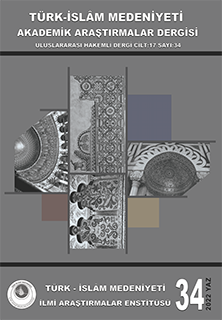1435 Herat Plague Outbreak and Its Course
DOI:
https://doi.org/10.5281/zenodo.6526385Keywords:
Herat, Plague, Epidemic, Taun, TimuridsAbstract
Epidemic diseases have caused the deaths of many people and social chaos from ancient times to the present day. The biggest outbreak recorded in human history is the epidemic in medieval Europe, known as the "Black Plague". In the Middle Ages, there was also a plague in Herat, the capital of the Timurians. According to the sources, the people of Herat were outraged as they had not encountered epidemic before. The outbreak in Herat in 1435 is reminiscent of the plague known in today's medical literature as the “Bubonic Plague”. During this period, the disease appeared in different parts of the body parts in people who contracted the plague and appeared in chickpea-sized acne. People who contracted the disease passed away two or three days later. Timurian sources provide information on the course of this plague. The plague continued in Herat for more than four months and some of the people abandoned the city after the plague was seen in the city. During the same period, the plague has not been remain limited to the city of Herat, but also occured in various parts of Europe, Anatolia, Egypt and Iran. In this study, the emergence and course of the 1435 Herat plague and some celebrities who died during the plague were mentioned, based on the Timurid chronicles.
References
Aka, İ. (1994). Mîrzâ Şâhruh ve Zamanı, Ankara: TTK.
Çelik, M. Y. (2021). “Antakya-Halep Çevresinde Veba Salgınları ve SosyoEkonomik Hayata Etkileri (XIV-XV. yüzyıllar)”, Bellek Uluslararası Tarih ve Kültür Araştırmaları Dergisi, 3 (Salgın Hastalıklar Özel Sayısı), 15-30.
Devletşah (2011). Tezkiretü’ş-Şuarâ, Terc. Necati Lugal, İstanbul: Pinhan Yayıncılık.
el-Fuşencî, (2021). Emir Timur (İbretu’n-Nâzırîn), çev. ve neşr. Ahmet Özturhan, İstanbul: Efe Akademi.
el-Makrîzî (1997). Kitâbu’s-Sulûk li Ma’rifeti Düveli’l-Mulûk, tah. Muhammed Abdulkadir Atâ, c. VI, Beyrut: Daru’l-Kutubi’l-İlmiye.
Fazlınejad, A. (2015). “Avamil ve Peyamedha-yı Şuyu‘-ı Morg-ı Siyah (Ta’un Bozorg-ı Kurun-u Vusta) der İran), Res Hist Med, c. 4/4, s. 211-224.
Hasan-ı Rumlu (2006). Ahsenü’t- Tevârîh, Terc. Mürsel Öztürk, Ankara: TTK.
Hvafî (1340 hş./1961-1962) Mücmel-i Fasihi, neşr. Mahmud Ferruh, c. III, Meşhed.
Hvândmîr (1333 hş. /1954-1955). Târîh-i Habibü’s Siyer fî Ahbar-ı Efrad-ı Beşer, nşr. Nâsır-ı Hüsrev, c. III-IV, Tahran: İntişarat-ı Hayyam.
İbn Hacer (1998). İnbâ‘ el-Ğumr bi Ebnâu’l-Umr, tah. Hasan Habeşî, c. III-IV, Kahire: Lecnetü İhyâi’t-Türâsi’l-İslâmî.
İsfahanî Kazvînî (1379 hş. /2000-2001). Hold-i Berin (Tarih-i Timuriyân ve Türkmenân), haz. Mir Haşim Muhaddes, Tahran: Mirâs-ı Mektûb.
İsfizârî (1338 hş. /1959-1960). Ravzâtü’l-Cennât fî Evsaf-ı Medineti Herât, neşr. M. Kâzım İmam, c. II, Tahran: İntişârât-ı Danişgâh-ı Tahran.
Kesîrî, M. ve Afşârfer, R. (1393 hş. /2014-2015). “Tahlilî ber Gozareş-i Bimar-i Ta’un der İran Devran-ı Fetret ve Timurî”, Fasıname-i İlmî, c. 24/114, s. 121138.
Mîrhvând (1385 hş. /2006-2007). Ravzâtü’s-Safâ fi Sireti’l-Enbiyâ ve’l-Müluk ve’lHûlefâ, neşr. Cemşid Kiyanfer, c. VI/II, Tahran: İntişarat-ı Esatir.
Parıldar, H. (2020). “Tarihte Bulaşıcı Hastalık Salgınları”, Tepecik Eğitim ve Araştırma Hastanesi Dergisi, c. 30/Ek 1, s. 19-26.
Semerkandî (1383 hş. /2004-2005). Matla‘-ı Sa‘deyn ve Mecma‘-ı Bahreyn, neşr. Abd’ul-Hüseyin Nevâî, c. II/I, Tahran: Pejûhişgâh-ı Ulum-i İnsanı ve Muta’alat-ı Ferhengi.
Shoshan, B. (2020), “Waba”, The Encyclopaedia of Islam New Edition, ed. P. J. Bearman vd., vol. XI, Leiden Brill, s. 2-3.
Şahin, M. (2015). “Ortaçağda Herât Bölgesinde Meydana Gelen Kıtlıklar, Bazı Doğal Felaketler ve Salgın Hastalıklar”, Uluslararası Sosyal Araştırmalar Dergisi, c. 8/36, s. 380-390.
TDK (2009). Türkçe Sözlük, Ankara: TDK.
Uçar, İ. (2020). Orta Çağ Kara Belası Amvâs Vebası -İslâm Tarihinde İlk Salgın, İstanbul: Siyer Yayınları.
Varlık, N. (2011). “Tâun”, DİA, c. 40, Ankara: TDV Yay., s. 175-177.
Downloads
Published
How to Cite
Issue
Section
License

This work is licensed under a Creative Commons Attribution-NonCommercial 4.0 International License.







